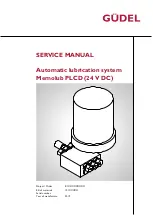
G
G
S
S
L
L
A
A
r
r
t
t
i
i
r
r
a
a
I
I
n
n
s
s
t
t
a
a
l
l
l
l
a
a
t
t
i
i
o
o
n
n
M
M
a
a
n
n
u
u
a
a
l
l
w
w
w
w
w
w
.
.
g
g
a
a
r
r
a
a
v
v
e
e
n
n
t
t
a
a
.
.
c
c
a
a
G
G
S
S
L
L
A
A
r
r
t
t
i
i
r
r
a
a
I
I
n
n
s
s
t
t
a
a
l
l
l
l
a
a
t
t
i
i
o
o
n
n
M
M
a
a
n
n
u
u
a
a
l
l
-
-
1
1
2
2
-
-
2
2
0
0
0
0
4
4
G
G
a
a
r
r
a
a
v
v
e
e
n
n
t
t
a
a
(
(
C
C
a
a
n
n
a
a
d
d
a
a
)
)
L
L
t
t
d
d
.
.
P
P
a
a
r
r
t
t
#
#
1
1
5
5
5
5
2
2
8
8
R
R
e
e
v
v
D
D
P
P
r
r
i
i
n
n
t
t
e
e
d
d
i
i
n
n
C
C
a
a
n
n
a
a
d
d
a
a
Remember
:
Landing clearances are measured from the centerline of the tube
(dimple) to the stair nose. This represents the center of the lower carriage. Its location,
relative to the stair nose, is given on the lift layout drawing a horizontal and vertical
dimension.
On longer lifts some discrepancies may occur. Try to average them out while making a
final check for landing clearances, splice alignment and fit. There is a tolerance in
clearance at each landing of around plus or minus 5mm. This tolerance is NOT
accumulative as you build the lift. Try to get the best fit possible throughout the system.
Install the rest of the towers if you are installing a tower-mounted lift. Remember to
check the tower numbers with those shown on the tube layout drawing.
With the tubes in position, check all splice connections for alignment. Note that the
proper fit of the splices is critical to ensure smooth lift operation. When fixing the lift in
place, smooth out any misalignment using shims behind the mounting struts.
Figure 11.
Typical landing
clearance check point.
Cam
Содержание GSL Artira
Страница 2: ......











































